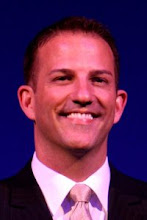Recently I have been thinking of fusing entertainment together to create something fresh and exciting. I believe this idea of merging two things together can lead to innovation. This was brought to my attention by an article I read regarding a classical ballet company that collaborated with a Hip Hop musical group. The ballet company had a desire to attract a new audience to their productions. These two worlds seemed to be at odds with each other. However, the creativity from each group blended together to create a compelling performance. The result was something that increased the visibility and profitability of both groups.
So I jumped on the Internet to see if I could find other entertainment companies who are doing similar things to stimulate interesting entertainment. In my quest, I found an interesting video called “Creating a Culture of Innovation”. It is an interview from Harvard Business Publishing with David Kester, the Chief Executive Officer of Design Council. Although the video does not talk specifically about entertainment, it has ideas that we can use to help us create a culture of innovation in our work.
Kester believes that leaders must do two things to build innovation within the workplace. First, they must create a culture of innovation. This must come from the leaders at the top. Communication about innovation is key and should be delivered regularly to all employees. Leaders must take the fear out of it so that individuals feel compelled to communicate their ideas. Second, he discussed that habits must be developed to build innovation. Everyone must understand these habits and develop them to increase the culture of innovation. He talks about how you should hire talent and look for individuals with different ideas. Often when you introduce outside individuals to your organization, this leads to the connecting of fresh ideas and new possibilities.
I wonder what interesting things we can blend together to create entertainment that is unique and creative. Do you have any innovative ideas that you would like to share?
References:
From:
